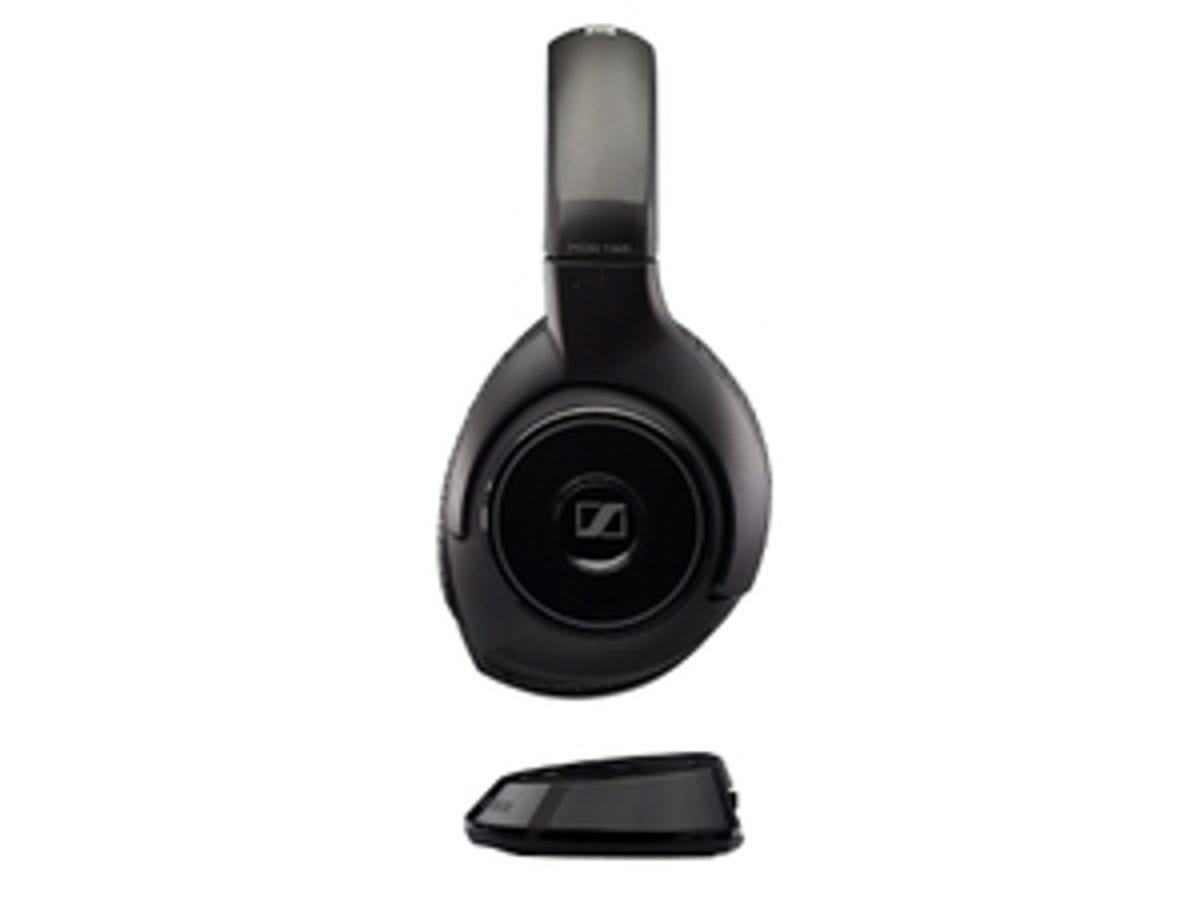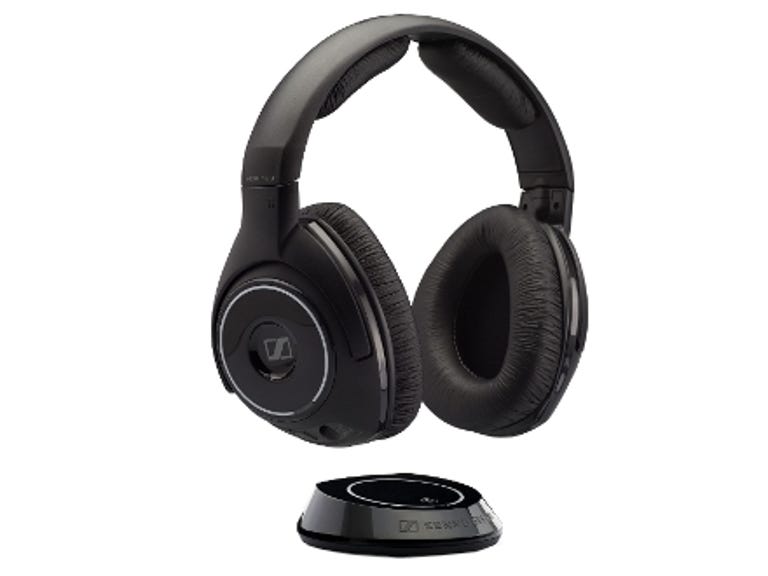 Why You Can Trust CNET
Why You Can Trust CNET Sennheiser RS 160 review: Sennheiser RS 160
The RS 160 wireless headphones aren't exactly cheap, and they lack some of the features sported by similarly priced rivals. But they cut no corners when it comes to sound quality. In fact, they're probably the best-sounding wireless cans we've come across, and they're comfortable too
The RS 160s are the entry-level model in Sennheiser's current line-up of over-the-ear wireless headphones. Priced at around £140, they're not exactly a low-cost option, though, especially as they don't include fancy extras like noise-cancelling circuitry. But Sennheiser believes these headphones' sound quality can justify their asking price, so we were keen to put them to the test.
The Good
The Bad
The Bottom Line
Comfortable cans
The headphones have a traditional over-the-ear design. They're made entirely from plastic and most of their surface is covered in a matte black finish, but the outward-facing part of each earpiece has a glossy coating, adding a touch of style.
In the box, you'll find a pair of NiMH rechargeable batteries that fit into a compartment under each of the removable ear muffs. The cans also come with a power adaptor that's used for both powering the disc-shaped transmitter and charging the headphones via the socket on the bottom of the right-hand earpiece. The transmitter can also be powered via a pair of AA batteries if you want to use it when you're on the move, but these aren't supplied as part of the package.
The transmitter has a standard 3.5mm stereo input mini jack, so you can connect it easily to a hi-fi, computer or MP3 player using the supplied cable. As it has a built-in pre-amp, there's also a small volume control on the rear to let you adjust the output level independently of the volume control on the headphones. Interestingly, it also has multi-point capability, so it can communicate with up to four pairs of RS 160s at any one time.

The headphones will run for around 24 hours once they're full of juice, although this depends on the distance between the transmitter and receiver, and the volume you use them at. Nevertheless, we found we easily got around 20 hours of use from them.
The cans are also very comfortable to wear, as they're relatively light and can be easily adjusted to fit pretty much any size of noggin. As with most over-the-ear cans, however, your ears tend to get rather warm with prolonged wear.
There are a couple of drawbacks to the RS 160s' design, however. Unlike the Sony MDR-NC500Ds, for example, the RS 160s can't be used with a wired lead, which means they're not suitable for use on planes. They don't have any of the fancy noise-cancelling electronics found on those Sony cans either. Also, Sennheiser has plonked the power button between the volume up and down buttons, so adjusting the volume on the cans is rather more fiddly than it could have been.
Loud and Kleer
Wireless headphones can be something of a mixed blessing. They help to free you from the tyranny of cables, but often their sound quality simply isn't as good as that which you get from a good pair of wired cans. Sennheiser, however, thinks it's cracked this problem with the RS 160s, which apparently use the Kleer wireless protocol to deliver no-compromise audio.
Unlike Bluetooth A2DP, Kleer delivers full-bandwidth, 16-bit, 44kHz, uncompressed, CD-quality sound. Combined with the two fairly large drivers used in each earpiece, this really makes a vast difference to sound quality. The RS 160s not only have much deeper and more accurate bass response compared with other wireless headphones we've used recently, but also sound incredibly crisp and clean when it comes to high frequencies, so hi-hats and cymbals really cut through on dance and rock tracks. Listening to everything from the slab-like crunch of Metallica tracks to the more delicate tones of Bat for Lashes really is a pleasure, thanks to the RS 160s' rich and luxurious sonics.
Conclusion
The Sennheiser RS 160 wireless headphones aim to please with their outright sound quality, rather than trying to woo you with fancy gimmicks. They succeed admirably, and are probably the best-sounding wireless cans we've come across.
Edited by Charles Kloet
